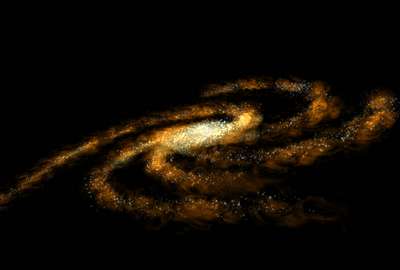Avi Blizovsky

Operators of the Sloan Digital Sky Scanner (SDSS-I) announced on May 8 that they had discovered two new pale dwarf galaxies orbiting the Milky Way.
The first was discovered in the direction of the hunting dog group Canes Venatici by the researcher Daniel Zucker from the University of Cambridge in the UK. His colleague Vassily Bloukorov discovered the second in the Bootes (Shepherd) group.
"I carefully examined the maps of the first stars in the galactic north, what we call the flow field - and we noticed an overdensity in the Hound region." Zucker explains. "When we examined the area in depth, we discovered that there is a galaxy that was not known until now, located about 640 thousand light-years or 200 kilofares from the Sun. The discovery is of one of the most distant companion galaxies of the Milky Way."
Zucker sent an email to Blokurov and Blokurov replied a few hours later, because he too had discovered an even paler dwarf galaxy.
The galaxy in Boots, which Blokorov called "Boo" showed a distorted structure that makes scientists think there is a disturbance in the Milky Way's gravitational waves. "Something really struck him.
Although dwarf galaxies are right in our cosmic backyard, they are difficult to detect because they are so dim. In fact, the new galaxy in Boots is the palest galaxy ever discovered, with its luminosity being about one hundred thousand suns, but due to its distance (640 thousand light years) it is almost invisible to most telescopes. The previous ambiguity record belongs to a galaxy that was discovered about a year ago in the Ursa Major group, also using Sloan data.
These discoveries contradict the accepted theory of galaxy formation, which holds that hundreds of "light dark matter" galaxies are expected to surround the Milky Way, each of them massive enough to host a visible dwarf galaxy, but only about ten companion dwarf galaxies have been discovered so far. One possibility is that these small clumps of cold dark matter are too faint to show up in previous searches but may be discovered by deep probes like SDSS-II.
"It's like looking for gold. Our view of the sky is vast, and we are looking for little tangles of stars." Astronomer Win Evans of the University of Cambridge and member of the team of researchers of the Sloan Survey explains. "The discovery and study of these galaxies is particularly important. Both their structure and motions can teach us about the properties of dark matter, as well as measure the mass and gravitational field of the Milky Way."
